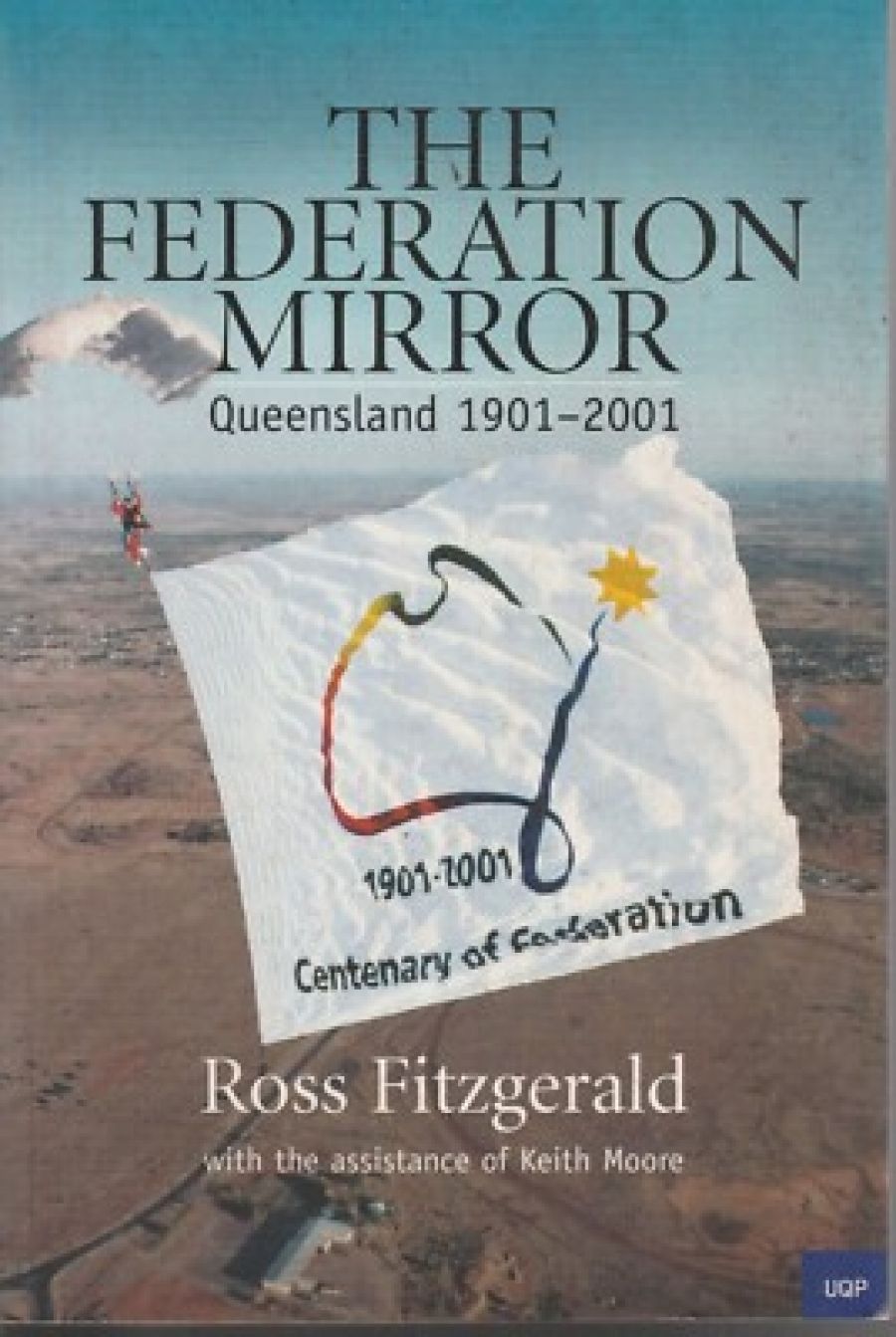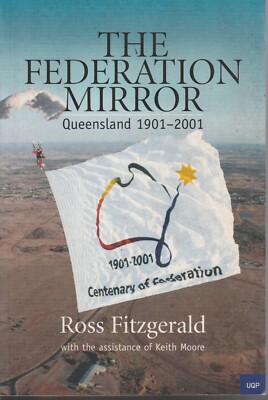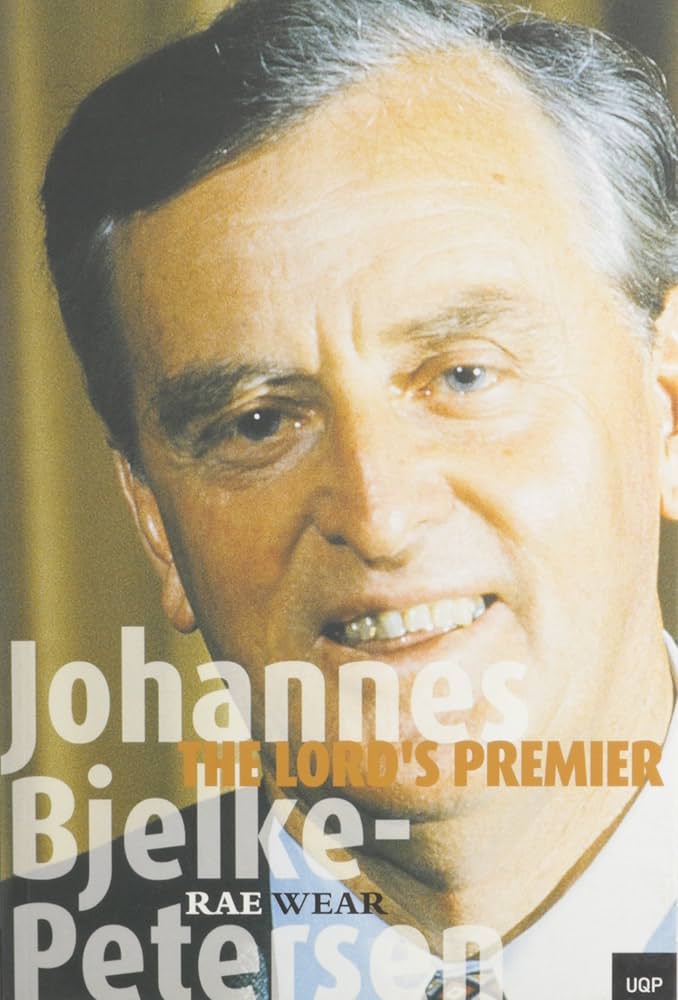
- Free Article: No
- Contents Category: Politics
- Review Article: Yes
- Article Title: What’s So Special?
- Online Only: No
- Custom Highlight Text:
‘Queensland is different’, overseas commentators would mutter sagely when the media ran yet another story on Joh Bjelke-Peterson, premier of that state from 1968 to 1987. Authoritarian without generosity, self-servingly ignorant of the decent checks and balances usual in the Westminster style of government, prejudiced and inarticulate, Joh was impossible. And yet Queenslanders went on voting for him. His provincialism evidently appealed to their provincialism. Eventually, like the big frog in the small puddle of Aesop’s fable, Joh puffed himself up into believing that, at the age of seventy-six, he could become Australia’s national leader. Like Aesop’s frog, his bubble burst and, before the year was over, he was out of office. During his later years as premier, he was the subject of three biographical studies, written by Derek Townsend, Hugh Lunn and Alan Metcalfe. Joh’s own memoirs followed in 1990. With the lapse of another decade, it was time for a reassessment, and Rae Wear has provided it.
- Book 1 Title: The Federation Mirror
- Book 1 Biblio: UQP, $30pb, 267pp
- Book 1 Cover Small (400 x 600):

- Book 1 Cover (800 x 1200):

- Book 2 Title: Johannes Bjelke-Peterson
- Book 2 Subtitle: The Lord’s Premier
- Book 2 Biblio: UQP, $35pb, 249 pp
- Book 2 Cover Small (400 x 600):

- Book 2 Cover (800 x 1200):

Wear’s book should be the starting point for readers wanting a balanced overview of Bjelke-Peterson’s career. Townsend published his book little more than halfway through his premiership; Metcalfe was obsequiously partisan; Lunn did bring the insights of a shrewd professional journalist to his account, but Wear also has the advantage of drawing on several studies by respected political scientists, as well as Cameron Hazlehurst’s biography of Sir Gordon Chalk, and Paul Reynolds’s of Mike Ahern.
There are few surprises. If Bjelke-Peterson, at fifty-seven, was lucky to come to power because of Jack Pizzey’s heart attack, he was cunning and ruthless in consolidating it. His manipulation of a party-room challenge in 1970, his steady marginalisation of the Liberals in the coalition until they could be dumped in 1983, his cronyism and use of patronage to cajole and threaten, are all well-known stories. So are his promotion of Queensland as a safe haven for overseas investment, his abolition of death duties for the benefit of farmers and Victorian retirees, and his stern measures against strikers and street demonstrators.
In accounting for Joh’s style and success, Wear rounds up the usual suspects. Labor, in office for all but three years between 1915 and 1957, set a powerful example of authoritarianism. From Labor, the Country Party (later the Nationals) inherited a rurally biased gerrymander, which kept them in power. Joh’s apparent lack of eloquence appealed to the average voter and concealed a shrewd approach to the media. A near-monopoly Brisbane press could be tamed by the withdrawal of government advertising.
None of these explanations is quite sufficient. Wear shows that Joh’s National Party probably did not need the zonal gerrymander to succeed at elections. (In any case, if, after coming unexpectedly to office in 1957, the Nationals had failed to consolidate themselves at the 1960 elections, the bush might easily have reverted to Labor.) In Perth, Adelaide and Hobart, generally anti-Labor daily papers enjoyed a similar monopoly to that of the Brisbane Courier-Mail, and yet Labor governments in those states enjoyed their share of office. We must seek other explanations.
Gough Whitlam, who consistently underrated the Queenslander, dismissed Joh as a ‘Bible-bashing bastard’. Wear explores his Lutheran background as particularly relevant to understanding Bjelke-Peterson’s ethos. She is careful to reject the view that Lutheranism permitted him to believe in a modern version of the Divine Right of Kings, but points out that many politicians - family men who attend church -are apt to believe that ‘A “good” man will not require political checks and balances. His personal virtue is sufficient guarantee.’ Conflating his own interest with Queensland’s, erasing the boundaries between public and private morality, Bjelke-Peterson believed that his intentions and personal courtesy justified almost any manoeuvre. Perhaps he should be seen not as a remnant of German Lutheranism, but as a portent of the Americanisation of the Australian political idiom.
Yet was Joh so exceptional? Henry Bolte, in Victoria, was equally contemptuous of protest movements. Brian Burke’s Labor government in Western Australia matched the Bjelke-Peterson régime in terms of cronyism towards favoured entrepreneurs and disregard of public service ethics. Peter Reith and others - including Ned Hanlon, Bjelke-Peterson’s Labor predecessor in Queensland - have cracked down hard on the trade unions. If the Nationals held power in Queensland for thirty-two years, they were only making up for a Labor hegemony (with one short break) of forty-two years. Other states, such as Tasmania and South Australia, have also known long periods of one-party rule. What was so special about Queensland?
Ross Fitzgerald, an academic who was one of Bjelke-Peterson’s more outspoken critics, may come some way towards providing an answer in The Federation Mirror. Having presided over Queensland’s Centenary of Federation committee, Fitzgerald undertook the task of summarising the year’s activities. Such chronicles are often predictable and boring. Fitzgerald had the bright idea of looking at the public activities of eight representative Queensland communities in the Federation year of 1901 and comparing them with the celebrations of 2001. His findings offer some interesting insights into Queensland’s political culture.
Not surprisingly, Queenslanders in 1901 displayed only moderate rapture in greeting their new Commonwealth. Brisbane and Toowoomba had been opposed to Federation, fearing commercial competition from New South Wales and Victoria. North Queensland centres such as Mackay, Townsville and Cairns had voted strongly in favour of Federation, but their enthusiasm was tempered by uncertainty about the impact of the White Australia policy on the sugar industry. Consequently, most centres were slow to organise their celebrations on 1 January 1901, and many of the speeches made on that day placed more stress on Queensland’s membership of the British Empire than on the new nation. The death of Queen Victoria, three weeks later, seems to have generated considerably more emotion.
Despite the patriotic rhetoric, the celebrations usually turned out to be a pretext for a day’s holiday. In several centres, the Japanese and Chinese communities staged picturesque tableaux, and white Australians were not so hardhearted as to stint on their applause. Some of the entertainments suggested nostalgia for the Old Country; there were Highland flings and maypole dances, and long-bearded characters masquerading as ancient Druids. In one or two places, the hilarity was planned to culminate in a chase after a greased pig, but at Irvinebank the sagacious animal escaped from its sty before the event could take place.
The celebrations of 2001 were at least as much fun. Queensland was divided into twelve zones, each taking turns to stage a month of events. Fireworks and merry-go-rounds were still much in evidence. Instead of Highland flings, several places now offered multicultural belly dancing. One of the finest celebratory displays anywhere in Australia took place in Townsville in August. The most impressive item in their street parade was the Carpet Snake Dreaming, evidence that Aboriginal Australians were no longer quite so marginalised as they had been during the 1901 celebrations.
Perhaps more should have been done during the centenary to promote an understanding of the constitutions of Queensland and the Australian Commonwealth. Although Premier Peter Beattie was more generous in sharing the limelight with politicians from rival parties than Bjelke-Peterson might have been, there was little emphasis on improving public awareness of the checks and balances desirable in a healthy political system. Other demagogues could arise in future to debase the political currency as Joh did. But like other Australians, Queenslanders possibly had their priorities right. As the visiting English historian James Froude observed more than a century ago: ‘It is hard to quarrel with men [and women] who only wish to be innocently happy.’


Comments powered by CComment